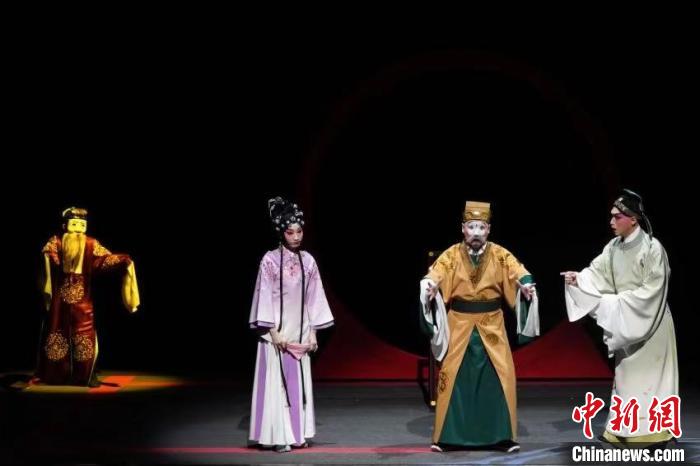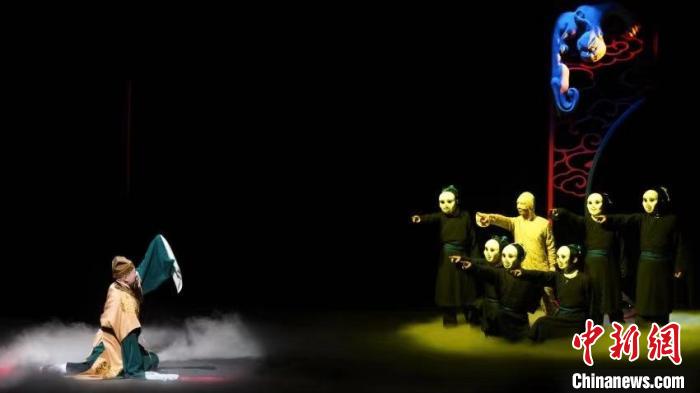Photo provided by the performer of Peking Opera “The Miser” in the small theater of Beijing Peking Opera Theater
Chinanews.com, Beijing, March 28 (Reporter Gao Kai) The Peking opera “The Miser” in the small theater of the Beijing Peking Opera Theater successfully premiered at the Auspicious Grand Theater a few days ago.
Small Theater Peking Opera “The Miser” is adapted from the comedy of the same name by the French playwright Molière. As the Beijing Peking Opera Theater’s annual key small theater Peking Opera creation and rehearsal project, the play specially invited Wang Shaojun, the director of the Department of Performance and Directing of the Chinese Academy of Traditional Chinese Opera, and a national first-level director, as the director and director of the adaptation. Liu Yang is responsible for singing design and composition. Mei Qingyang, a national first-class actor and a famous clown from the Beijing Peking Opera Theater, and Sun Shimin, an outstanding young actor from the Beijing Peking Opera Theater, played the leading role in the play “Master Gong”.
According to reports, under the current situation of scarcity of newly created repertoires of scandal, the small theater Peking Opera “The Miser” came into being. This time, the small theater Peking Opera “The Miser” designed a large number of singing and core arias for the protagonist “Master Gong”. In order to give full play to the humorous, unique character and ugly characteristics of “Master Gong”, the vocal design uses glide notes, interspersed singing and reciting, and at the same time combines the rap art of Quyi to fully demonstrate the characteristics of ugly performances. In addition, the whole play runs through a traditional Peking Opera tune “Fisherman’s Song”, combined with various forms such as waltz, female chorus and instrumental music, which makes the play not only follow the rhythm of Peking Opera, but also appear novel and unique.

Photo provided by the performer of Peking Opera “The Miser” in the small theater of Beijing Peking Opera Theater
In terms of clothing, we pursue the beauty of traditional Chinese opera costumes, and express the character and identity of the characters through the basic characteristics of freehand brushwork, formula, exaggeration, decoration and danceability, and convey the emotions and hearts of the characters. Historical elements and Western elements are added to the clothing color and plate making. For example, the costumes of “Miss Ma” and “Miss Gong” in the play adopt the general style of Peking opera pleats and jacket skirts, but adopt Western elements in the collar design. Elements of off-the-shoulder dresses.
In terms of stage beauty, the play continues the stage aesthetics of traditional Chinese opera “one table and two chairs”, which is concise and agile. With red and black as the main colors, a touch of Chinese red on the stage is gorgeous and jumpy. Red also symbolizes vitality in Western culture. In this play, it interprets human nature more abstractly. At the same time, a device evolved from a round vanity mirror is set up, sometimes actors wearing various masks walk through it, representing the various life styles in the world; sometimes it is set as a transition to symbolize the boudoir. Another door frame-shaped device evolved from the ancient window lattice, with the traditional opera cloud pattern of Pixiu on it, implying the extreme miserliness of “Master Gong”.
The opening scene of “The Miser” combines Western masked theater and traditional Chinese big-headed doll performances. The actors wore masks and kicked off the whole performance with humorous dances. When the father and son of “Master Gong” are bargaining, the imagery “abacus dance” is used to show the character image of the protagonist “Master Gong” who is careful and stingy. The “cooking dance” in the “Master Gong” banquet is based on the art form of the Korean musical “Nanta”, using the percussion of the opera to play the music of rock music, accompanied by the brisk rhythm , the choreography of the dance moves echoes the lively and interesting plot and the humorous performance style, which adds a lot to the play. The choreography of these dances also reflects the characteristics of the play’s localized transplantation of Western drama and Western culture.
It is worth mentioning that in the Peking opera “The Miser”, the main creator used imagery techniques to anthropomorphize “Master Gong” as the money of life, and created a novel character – “money man”. It not only cleverly shows the protagonist “Master Gong”‘s love and care for money like a lover, but also allows the audience to deeply feel the character’s character while watching the performance happily, and triggers thinking about the current “money concept”. The social value and practical significance of Peking Opera “The Miser” in Paixiao Theater. (over)
Responsible Editor: Tang Shixu
